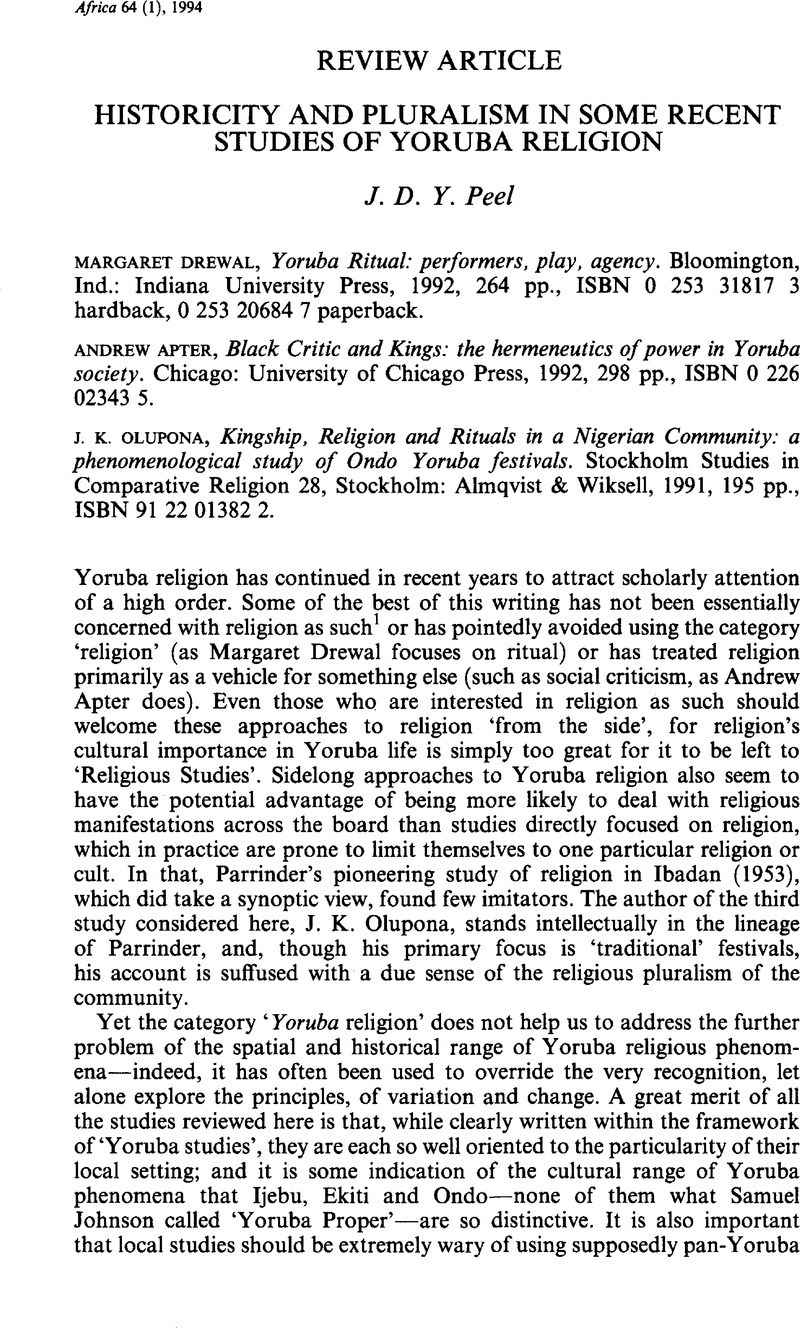Crossref Citations
This article has been cited by the following publications. This list is generated based on data provided by Crossref.
Hawkins, Sean
1996.
Disguising chiefs and God as history: questions on the acephalousness of LoDagaa politics and religion.
Africa,
Vol. 66,
Issue. 2,
p.
202.
Werbner, Richard
1997.
The suffering body: passion and ritual allegory in Christian encounters.
Journal of Southern African Studies,
Vol. 23,
Issue. 2,
p.
311.
Meyer, Birgit
2004.
Christianity in Africa: From African Independent to Pentecostal-Charismatic Churches.
Annual Review of Anthropology,
Vol. 33,
Issue. 1,
p.
447.
Meyer, Birgit
2006.
Religious revelation, secrecy and the limits of visual representation.
Anthropological Theory,
Vol. 6,
Issue. 4,
p.
431.
Gilbert, Michelle
2010.
Disguising the Pain of Remembering in Akwapim.
Africa,
Vol. 80,
Issue. 3,
p.
426.
2012.
The Wiley‐Blackwell Companion to African Religions.
p.
529.
Richman, Karen
2012.
Religion at the Epicenter.
Studies in Religion/Sciences Religieuses,
Vol. 41,
Issue. 2,
p.
148.
Prempeh, Charles
2022.
Religious innovations of chieftaincy in Ghana: Pentecostal Christianity and the complex persistence and transformation of Akan chieftaincy.
Religion Compass,
Vol. 16,
Issue. 1,
Hackett, Rosalind I. J.
2022.
From Festive Sacred to Festive Secular? Indigenous Religious Presence in Two Nigerian Festivals.
Numen,
Vol. 69,
Issue. 4,
p.
341.
Prempeh, Charles
2024.
The Palgrave Handbook of Christianity in Africa from Apostolic Times to the Present.
p.
625.





